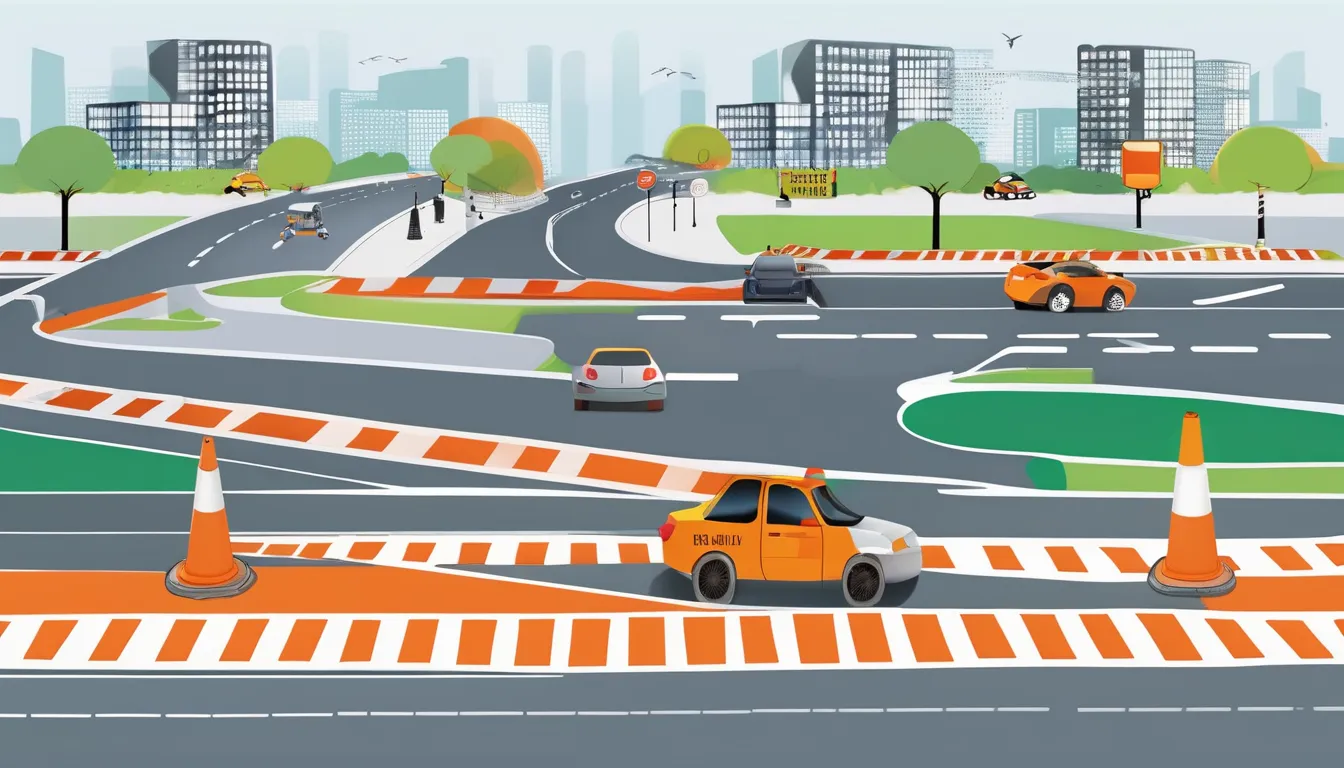
As you plan a temporary lane closure, it’s crucial to consider the potential impact on traffic flow and safety. You’re about to navigate a complex process that involves more than just setting up traffic cones and signs. Effective temporary lane closure traffic control requires a thoughtful approach, from identifying the closure’s purpose to establishing alternative routes and detours. But what are the essential steps to take, and how can you ensure a smooth operation? The key lies in a well-structured plan and a deep understanding of the guidelines that govern temporary lane closures – let’s take a closer look.
Pre-Planning and Coordination
When it comes to setting up temporary lane closures, you’re working within a delicate balance of safety, traffic flow, and construction efficiency. To achieve this balance, you need to carefully plan and coordinate the closure before it’s implemented.
This involves identifying the purpose of the closure, determining the duration, and assessing the impact on traffic. You’ll need to gather data on traffic volume, speed, and composition to determine the best time for the closure.
You should also consider alternative routes and detours to minimize disruptions to traffic flow. It’s essential to coordinate with stakeholders, including law enforcement, emergency services, and the public, to ensure everyone is aware of the closure.
Coordination with other agencies and stakeholders will help you identify potential issues and develop contingency plans. You should also establish clear communication channels to ensure that everyone involved is informed and up-to-date on the status of the closure.
Traffic Control Devices and Signs
How effectively can you divert traffic with minimal disruption? The answer lies in the proper use of traffic control devices and signs. As you plan your temporary lane closure, you’ll need to select the right devices and signs to guide traffic safely and efficiently.
Choose signs that are clear, concise, and compliant with local and national standards. Arrow boards, traffic cones, and drums can help divert traffic and define the work zone.
Consider using changeable message signs to provide real-time updates and warnings to drivers. Make sure the signs are positioned in a way that provides adequate notice to drivers, taking into account speed, road geometry, and environmental conditions.
Ensure that all devices and signs are correctly sized and spaced to maintain visibility and legibility.
Nighttime operations require additional consideration, with reflective materials and lighting to enhance visibility.
Lane Closure Setup and Layout
You’ve selected the right traffic control devices and signs to guide drivers through your temporary lane closure. Now it’s time to set up and lay out the lane closure effectively. The goal is to ensure a smooth traffic flow while maintaining safety for both drivers and workers.
When setting up the lane closure, consider the following layout:
| Component | Location | Purpose |
|---|---|---|
| Warning signs | 500-1000 ft before closure | Alert drivers of lane closure |
| TrafCon Services cones or drums | Before and after closure | Guide drivers through the closure |
| Arrow boards or signs | Before closure | Direct drivers to the open lane |
| Lane closure signs | At the closure | Clearly indicate the lane closure |
| Buffer zone | After closure | Provide a safe distance for workers |
Position the components in a way that provides clear guidance and visibility for drivers. Ensure that the lane closure setup and layout comply with local regulations and standards. This will help minimize disruptions and ensure a safe working environment.
Traffic Flow Management Strategies
Effective traffic flow management is crucial for minimizing disruptions and ensuring a safe working environment during a temporary lane closure. You should focus on optimizing traffic flow by implementing strategies that reduce congestion and prevent bottlenecks.
One approach is to use dynamic lane management, where lanes are adjusted in real-time to respond to changing traffic conditions. This can be achieved through the use of intelligent transportation systems, such as traffic cameras and sensors that monitor traffic flow.
Another strategy is to implement traffic routing and diversion plans. You can redirect traffic to alternative routes to reduce congestion and minimize delays.
This can be achieved through the use of variable message signs, which provide real-time information to drivers about traffic conditions and recommended routes.
Additionally, you should consider implementing traffic metering, which involves regulating the flow of traffic onto a road to prevent congestion. This can be achieved through the use of ramp meters or traffic signals that control the flow of traffic.
Monitoring and Incident Response
During temporary lane closures, continuous monitoring is essential for identifying and responding to incidents that can impact traffic flow and safety. You’ll need to establish a monitoring system that allows you to track traffic conditions, pedestrian and cyclist activity, and weather conditions in real-time. This can be achieved through the use of cameras, sensors, and other monitoring technologies.
You should also designate a team to monitor the lane closure and respond to incidents as they occur.
This team should be trained to identify potential hazards and take immediate action to mitigate their impact. If an incident occurs, you’ll need to have a plan in place for responding to it quickly and effectively. This may involve diverting traffic, providing detour information to drivers, and ensuring that emergency services can access the area if needed.
Your incident response plan should be tested and refined regularly to ensure that it’s effective in minimizing disruptions to traffic flow and ensuring safety.
Conclusion
You’ve developed a comprehensive plan for temporary lane closure traffic control. By following these guidelines, you’ll minimize disruptions to traffic flow and ensure the safety of both workers and drivers. Remember to stay vigilant and adapt to changing conditions. Effective implementation of pre-planning, traffic control devices, and real-time monitoring will help you navigate the complexities of temporary lane closures. With careful execution, you’ll achieve a safe and efficient traffic management process.



